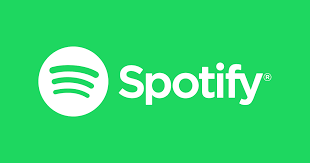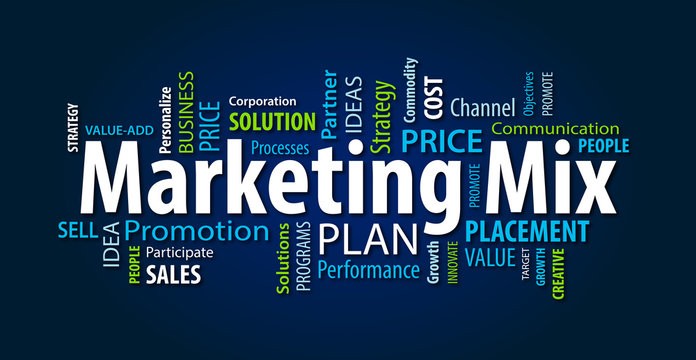Introduction to Spotify
Launched in 2008 in Sweden, Spotify has grown into the world’s most popular audio streaming service, revolutionizing how we discover, consume, and share music and podcasts. With over 600 million active users (as of 2024) across more than 180 countries, Spotify isn’t just a platform—it’s a cultural force that blends technology, entertainment, and personalized experiences.

What sets Spotify apart is its deep understanding of user behavior, its cutting-edge recommendation algorithms, and its bold, creative marketing. From the viral success of Spotify Wrapped to innovative brand partnerships and data-driven billboards, the company has become a textbook example of how to connect emotionally with a global audience while still being rooted in personalization and data.
Spotify offers a freemium model—a free ad-supported version and a premium subscription tier—allowing it to attract both casual listeners and dedicated fans. Beyond music, it has also positioned itself as a major player in the podcast industry, acquiring major studios and exclusive rights to top creators like Joe Rogan, Michelle Obama, and Emma Chamberlain.
Whether you’re a music lover, a podcast addict, or a marketer looking for inspiration, the company’s journey offers a masterclass in how to blend product innovation with emotionally intelligent marketing.
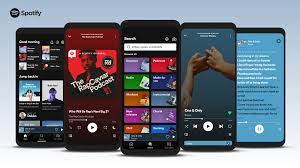
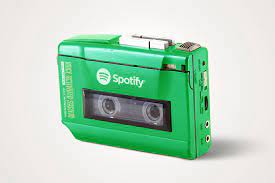
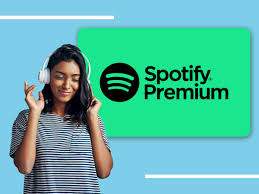
Spotify’s Marketing Campaigns
Here’s a detailed overview of some of Spotify’s most compelling marketing campaigns, which have played a key role in establishing its dominance in the audio streaming world:
1. Spotify Wrapped (2016–Present)
Spotify Wrapped is an annual, data-driven marketing campaign that presents each user with a personalized summary of their listening habits over the past year. Launched in 2016, Wrapped includes stats like top songs, artists, genres, minutes listened, and more—delivered in a playful, shareable format through in-app stories and graphics.

Why It Works:
- Personalization: Every experience is unique to the user, creating an emotional connection and relevance.
- Shareability: Wrapped is designed for social media, encouraging users to post their stats, which fuels viral marketing.
- Brand Affinity: It turns user behavior into a celebration, making fans feel seen, heard, and loyal.
Impact:
Spotify Wrapped has become a highly anticipated cultural event each December. It boosts app engagement, attracts press coverage, and dominates social media for days—all without traditional advertising spend. It’s a prime example of how smart use of data can fuel both user delight and global brand growth.
2. “Thanks, 2016. It’s Been Weird.” (2016)
“Thanks, 2016. It’s Been Weird” was a global out-of-home (OOH) and digital campaign launched by Spotify at the end of 2016. It humorously highlighted quirky and surprising user behavior by featuring real (anonymized) data in the form of witty billboards and ads. Examples included lines like:
“To the person in NoLIta who started listening to holiday music way back in June— you really jingle all the way, huh?”
“To the 1,235 people who played ‘It’s the End of the World As We Know It’ the day of the Brexit vote—Hang in there.”

Why It Works:
- Humanizes Data: It turned cold analytics into relatable, funny, and emotional moments.
- Cultural Relevance: It tapped into the collective mood of 2016—a year marked by global upheaval and weirdness.
- Hyper-Local & Global: Ads were tailored by city and country, blending local humor with global impact.
Impact:
This campaign marked a turning point for Spotify’s brand personality, positioning it as witty, socially aware, and deeply connected to its users. It earned widespread praise for its originality and helped solidify the brand as more than just a music app—it became a storyteller of modern culture.
3. Spotify’s 2018 Goals Campaign
Spotify’s 2018 Goals campaign was a witty, data-driven marketing initiative that transformed users’ listening habits into humorous New Year’s resolutions. Launched in late 2017, the campaign featured over 350 unique out-of-home (OOH) ads across 18 global markets, including New York, London, São Paulo, and Mumbai. The ads showcased quirky statistics derived from user data, such as:
- “Be as loving as the person who put 48 Ed Sheeran songs on their ‘I Love Gingers’ playlist.”
- “Eat vegan brisket with the person who made a playlist called ‘Leftist Elitist Snowflake BBQ.’”
- “Take a page from the 3,445 people who streamed the ‘Boozy Brunch’ playlist on a Wednesday this year. These playful messages not only entertained but also highlighted the brand’s ability to analyze and present user data in a relatable and engaging manner.
The campaign was developed and executed in-house by Spotify’s brand and creative team. It aimed to celebrate the diverse and sometimes unexpected ways people engage with music, turning personal listening habits into shared cultural moments.
In addition to the OOH ads, the company offered personalized year-in-review experiences for users, providing insights into their listening patterns and encouraging them to share their musical journeys on social media. This approach not only enhanced user engagement but also amplified the campaign’s reach through organic sharing.
Overall, the 2018 Goals campaign exemplified the brand’s innovative use of data analytics to create a memorable and shareable marketing experience that resonated with a global audience.



4. The “Only You” Campaign (2021)
“Only You” was a global campaign launched by Spotify in 2021 as a mid-year counterpart to the popular Spotify Wrapped. It celebrated the uniqueness of each listener’s habits through a personalized, interactive in-app experience. Users were shown quirky, customized insights like their unique audio pairings (e.g., the unexpected mix of genres or artists they listened to), their “Audio Birth Chart,” and the artist they’d invite to dinner.
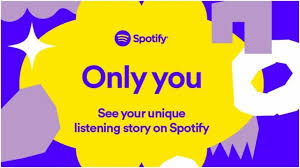
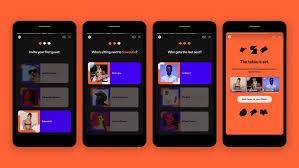
Why It Works:
- Personalization with a Twist: Like Wrapped, it offered individualized content, but with new formats and themes focused on personal identity.
- Interactive & Shareable: Designed for visual appeal and social media sharing, it encouraged users to post their “Only You” stories.
- Artist Integration: The campaign included custom experiences tied to users’ top artists, strengthening the artist-fan connection.
Impact:
“Only You” helped boost user engagement during a traditionally quieter time of year. It reinforced the brand’s message of individuality and discovery, while also keeping top-of-mind between Wrapped campaigns. The campaign showcased the brand’s commitment to celebrating diversity in listening habits—and gave users a fun, fresh way to connect with the platform and their music.
5. The Billie Eilish Experience (2021)
The Billie Eilish Experience was an immersive, interactive campaign launched by Spotify in 2021 to promote Billie Eilish’s album Happier Than Ever. The campaign featured a personalized microsite that gave fans a unique audio-visual journey through the album, combining Spotify’s streaming technology with storytelling, exclusive content, and behind-the-scenes commentary from Billie herself.

Why It Works:
- Artist-Driven Storytelling: The campaign allowed Billie to connect directly with fans by guiding them through her creative process and personal reflections on each track.
- Immersive UX: The experience featured dynamic visuals, motion graphics, and responsive design that made it feel like a digital art exhibit.
- Emotional Engagement: By turning an album release into an experience, it deepened the emotional bond between the artist and her audience.
Impact:
The Billie Eilish Experience blurred the lines between music, marketing, and digital art. It showcased Spotify’s ability to elevate artist campaigns beyond streaming, into multi-sensory fan experiences. It also set a precedent for future artist collaborations on the platform, where music discovery is enhanced through storytelling and interactivity.
6. #SpotifyWrapped TikTok Campaign
The #SpotifyWrapped TikTok Campaign amplified the annual Spotify Wrapped experience by leveraging the viral power of TikTok to drive massive user engagement and brand visibility. Each December, as Spotify releases personalized listening stats to users, the brand extends the celebration to TikTok, encouraging users to share their Wrapped highlights in creative, funny, and emotional videos using the hashtag #SpotifyWrapped.

Why It Works:
- Viral Format: TikTok’s short-form video style is perfect for users to react to or showcase their Wrapped results.
- User-Generated Content (UGC): Spotify empowered fans to tell their stories, fueling organic promotion at scale.
- FOMO & Trend Culture: The campaign taps into TikTok’s trend cycles, and users want to join in before the moment passes.
- Influencer Partnerships: Spotify collaborates with influencers to spark creative takes and challenges that spread quickly.
Impact:
- Billions of views under the hashtag #SpotifyWrapped.
- Wrapped became more than a product feature—it evolved into a global, multi-platform event.
- It strengthened Spotify’s cultural relevance, especially with Gen Z and Millennials, and reinforced its identity as a personalized, shareable, and emotionally resonant brand.
This campaign highlights how Spotify turns data into content and listeners into passionate brand advocates.
7. “A Song for Every CMO” (B2B Campaign)
“A Song for Every CMO” was a bold and clever B2B marketing campaign launched by Spotify Advertising to directly target Chief Marketing Officers (CMOs) at major brands. As part of the campaign, Spotify created personalized playlists for individual CMOs, each curated to reflect their company’s brand identity, tone, and target audience. The playlists were packaged with witty, customized messages that showcased Spotify’s creative capabilities and deep understanding of brand voice.
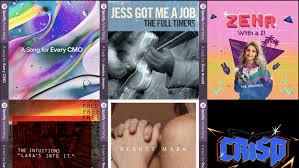
Why It Works:
- Hyper-Personalization: Each playlist felt tailored, thoughtful, and brand-specific, making it impossible to ignore.
- Creative B2B Outreach: Spotify flipped the script on traditional business marketing by using its platform’s core product—music—to speak directly to decision-makers.
- Subtle Product Placement: It demonstrated the potential of Spotify Ads without a hard sell, letting the platform’s creative power speak for itself.
Impact:
This campaign generated significant buzz in the marketing and advertising world. It positioned Spotify as an innovative partner for brands looking to reach targeted audiences through audio. “A Song for Every CMO” proved that Spotify could not only serve listeners but also deliver value to advertisers with creativity, personalization, and cultural fluency.
It was a standout example of B2B marketing done with B2C flair.
8. “Listening Together” (2020, During COVID-19)
“Listening Together” was a heartfelt global campaign launched by Spotify in 2020 during the height of the COVID-19 pandemic. With much of the world in lockdown and people physically isolated, Spotify aimed to highlight the unifying power of music by showing how listeners around the globe were connecting through shared listening experiences—even when apart.
At the center of the campaign was a real-time digital experience that visualized pairs of users across different locations pressing play on the same song at the same moment.
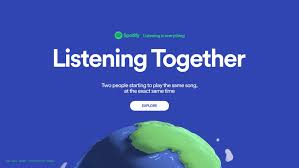
Why It Works:
- Emotional Resonance: It tapped into the collective need for connection, comfort, and community during a time of uncertainty.
- Global Unity: By showing users from different countries listening to the same tracks, it reinforced a sense of global togetherness.
- Brand Purpose: Spotify positioned itself not just as a streaming service, but as a companion in hard times.
Impact:
- Reinforced Spotify’s brand as empathetic, human, and culturally in tune.
- Strengthened user loyalty and emotional connection with the platform.
- Gained widespread media attention and praise for its sensitive, unifying message.
“Listening Together” demonstrated how brands can play a meaningful role in moments of crisis by focusing less on products and more on shared human experiences.
9. “All the Moods” (2023)
“All the Moods” was a global campaign launched by Spotify in 2023 to showcase the platform’s ability to match music with every emotion, activity, and moment in a listener’s life. Building on its data-driven personalization strengths, the campaign highlighted Spotify’s expansive library of mood- and moment-based playlists, such as Mood Booster, Sad Bops, Peaceful Piano, or Feelin’ Myself.
The campaign ran across digital, video, social media, and out-of-home channels, featuring playful, colorful visuals and copy tailored to different emotional states and daily routines.

Why It Works:
- Emotional Relevance: Music is deeply tied to mood, and Spotify tapped directly into that emotional landscape.
- Personal Utility: By promoting mood-based playlists, Spotify positioned itself not just as entertainment but as a daily life companion.
- Creative Visuals: The campaign used vibrant, relatable visuals and witty language to connect with users in fun, engaging ways.
Impact:
- Encouraged greater discovery and use of Spotify’s curated playlists, increasing listening time and engagement.
- Reinforced the idea that Spotify knows you, not just what you like, but how you feel.
- Enhanced Spotify’s branding as a personalized, lifestyle-driven platform, not just a utility for streaming.
“All the Moods” showed how Spotify continues to evolve from a music app into a deeply integrated part of users’ emotional and everyday experiences.
10. Spotify’s Podcast Push (Ongoing)
Spotify’s Podcast Push is an ongoing, multi-year initiative aimed at making the platform a global leader in audio content, not just music. Starting around 2019, Spotify began heavily investing in the podcast space through high-profile acquisitions, exclusive content deals, and strategic marketing campaigns.
This initiative includes partnerships with major creators like Joe Rogan, Michelle Obama, Emma Chamberlain, and the Archetypes series with Meghan Markle, as well as the acquisition of podcast production companies such as Gimlet Media, The Ringer, and Parcast.
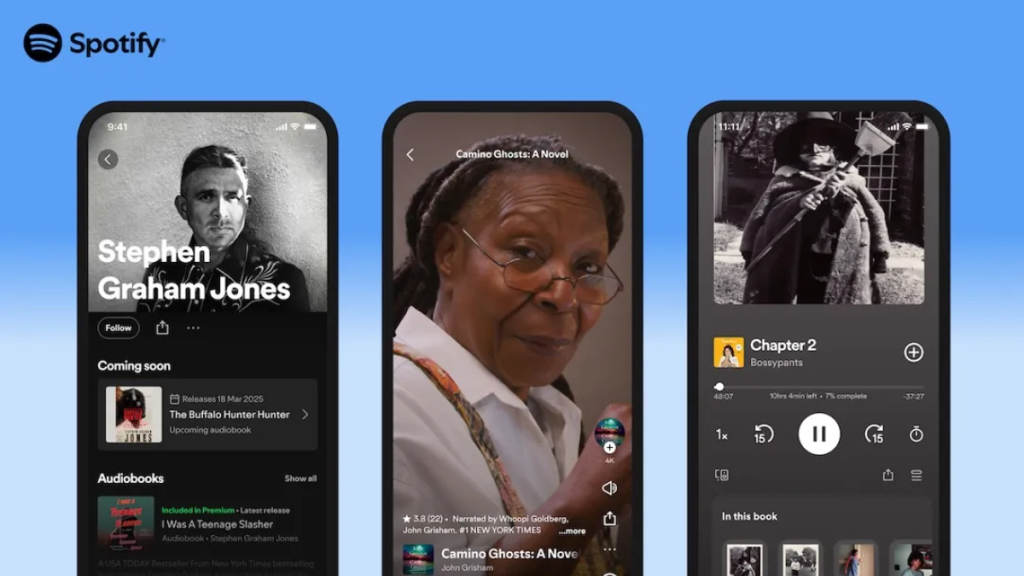
Why It Works:
- Content Exclusivity: By locking in exclusive shows, Spotify incentivizes users to choose its platform over competitors like Apple Podcasts or YouTube.
- Creator Marketing: Spotify promotes shows using creator-first storytelling, trailers, and strong brand visuals.
- Cross-Promotion: Users discover podcasts via homepage banners, curated playlists, push notifications, and email campaigns—blending discovery seamlessly into the app.
Impact:
- Spotify became the #1 podcast platform in multiple markets.
- Helped reshape Spotify’s brand identity from a music-only app to a complete audio destination.
- Drove ad revenue through Spotify Audience Network, allowing advertisers to target listeners with precision.
- Attracted new demographics and kept users more engaged for longer periods.
Spotify’s Podcast Push reflects its long-term vision: to own the future of audio, not just music. It’s a bold and successful expansion into new content territory—one that’s reshaping the way people consume, create, and monetize sound.
11. Music Sounds Better With You
“Music Sounds Better With You” is one of Spotify’s thematic campaigns that celebrates the powerful connection between music and shared experiences. While it’s not a single specific campaign like Spotify Wrapped or 2018 Goals, the phrase embodies Spotify’s broader brand messaging that music enhances moments when enjoyed together, whether with friends, family, or a community.
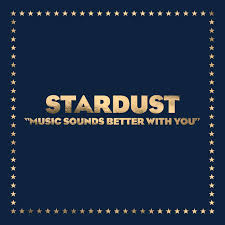
Key Ideas Behind the Campaign Theme:
- Emotional Connection: Highlights how music creates bonds between people.
- Shared Experiences: Encourages listeners to explore and share playlists, concerts, and music moments collectively.
- Lifestyle Integration: Positions Spotify as more than just a streaming app—it’s part of social life and celebrations.
Possible Examples & Activations:
- Collaborative playlists where friends add songs together.
- Campaigns around holidays, parties, or special occasions promote shared listening.
- Social media promotions encourage users to share stories of music memories with others.
12. Listen Like You Used To
“Listen Like You Used To” is a nostalgic-themed campaign concept often associated with music brands like Spotify that encourages users to reconnect with the music that shaped their past. The campaign taps into the emotional power of music memories, reminding listeners of the songs, artists, and playlists from earlier times in their lives.

Key Themes and Elements:
- Nostalgia: Evokes feelings tied to past experiences, youth, and significant life moments through music.
- Rediscovery: Encourages users to revisit old favorites, forgotten tracks, or genres they once loved.
- Emotional Engagement: Connects deeply with users by aligning music with personal stories and memories.
- Personalization: Uses listening history and data to create tailored playlists and recommendations.
How It Could Be Executed:
- Personalized playlists like “Your 90s Jams”, “Songs from Your High School Days”, or “Throwback Tracks”.
- Social media campaigns invite users to share stories or posts about their favorite songs from the past.
- Interactive features within the app highlight past listening trends or anniversaries of key tracks.
Why It Works:
- Nostalgia is a powerful driver of emotional connection and brand loyalty.
- Helps Spotify differentiate by offering not just current hits but a bridge to meaningful past moments.
- Drives engagement through sharing and discovery.
Conclusion on Spotify’s Marketing Campaigns
Spotify’s marketing campaigns stand out for their creativity, personalization, and cultural relevance. Whether through data-driven initiatives like Spotify Wrapped, emotionally resonant efforts like “Listening Together”, or localized out-of-home campaigns, Spotify has consistently demonstrated its ability to connect with audiences on a deeply personal level.
What sets Spotify apart is its mastery of blending technology with storytelling, turning user behavior into compelling narratives that people want to share. By investing in creator partnerships, pushing the boundaries of audio content through its podcast strategy, and authentically localizing global efforts, Spotify has built a brand that feels innovative, human, and emotionally intelligent.
In a crowded digital landscape, Spotify doesn’t just market a product—it markets experiences, identities, and moments. Its campaigns are not just about streaming; they are about how people feel, express themselves, and connect with others through sound. This approach has helped Spotify become more than just a music app—it’s now a defining voice in global culture.
Note –
In today’s global marketplace, every purchasing decision carries weight. As conscious consumers, we have the power to support businesses that align with our values. We encourage you to consider exploring and promoting products that reflect ethical practices and contribute positively to local communities.
In light of the Israel-Palestine conflict, we do not support promoting Israeli products that generate profits used to harm innocent people. Instead, we focus on their product innovation ideas and promotional techniques. How have they captured the global market? How have they influenced consumers to purchase their products over the decades? What marketing strategies have they employed? We encourage new entrepreneurs to study their business and marketing strategies to develop alternative products.
By choosing not to promote Israeli products, you can take a stand for justice and equity, supporting brands and entrepreneurs who prioritize these values. At the same time, this is a call to new entrepreneurs: Now is the time to bring your innovative ideas to life! The world needs fresh, ethical alternatives that can compete on the global stage.
If you’re an entrepreneur with a passion for creating products that make a difference, seize this opportunity to fill the gap with your unique offerings. Let’s build a marketplace that celebrates diversity, fairness, and innovation. Together, we can shape a future where our choices reflect our principles and foster a more just and inclusive economy.

